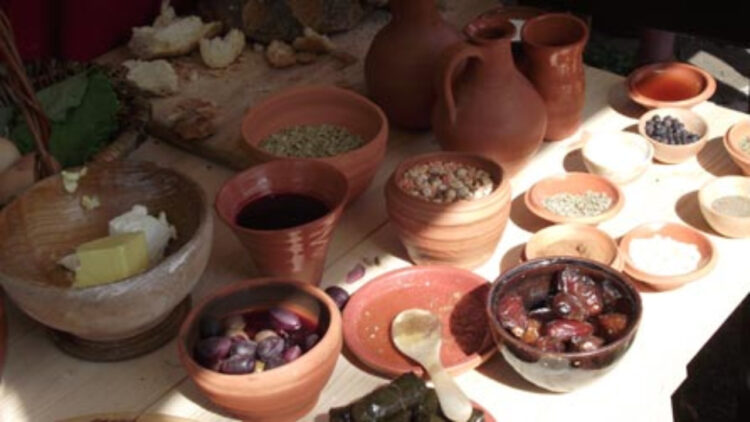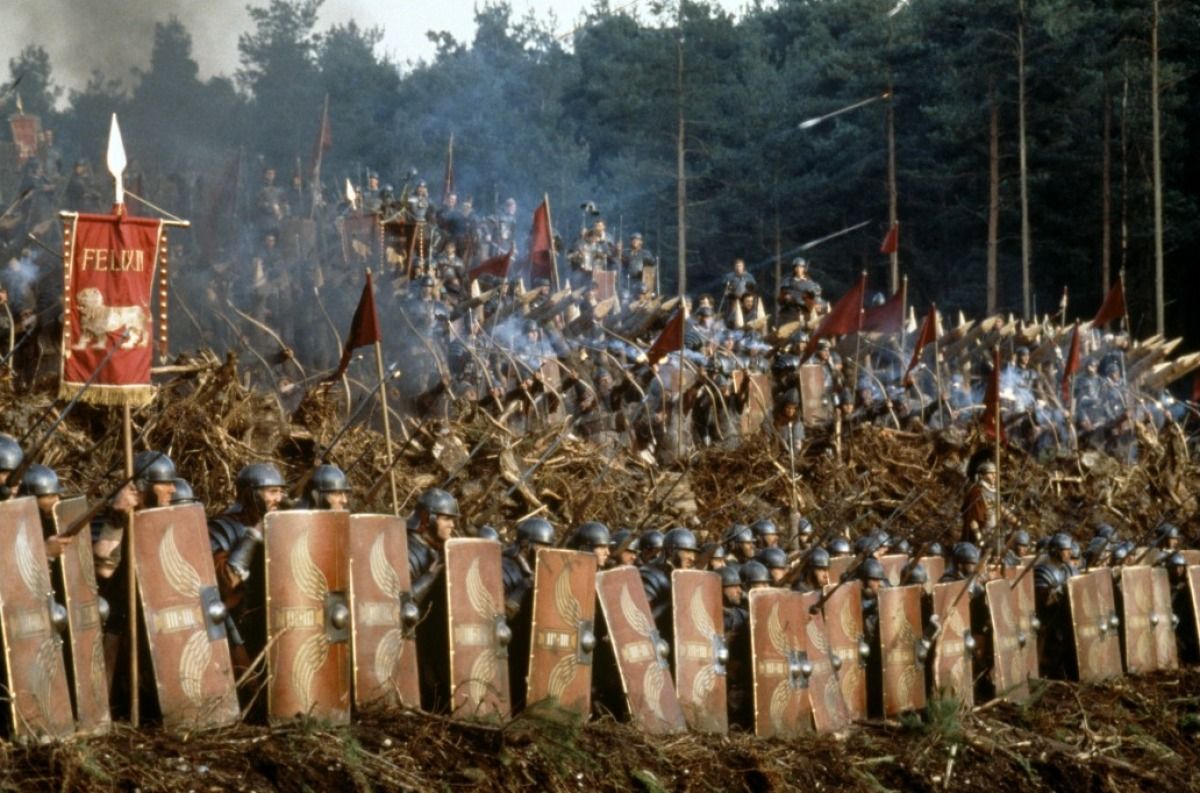The Roman legions had an organized system for supplying food, and they carried rations known as “cibaria” with them during campaigns. These rations consisted of various food items, including salted meat, hardtack biscuits, cheese, and olive oil. They provided sustenance when fresh supplies were scarce or when the army was on the move.
Grains formed the foundation of the Roman soldiers’ diet. Wheat was the most common grain, used to make bread, porridge, and other food staples. Soldiers would typically carry rations of hardtack biscuits, called “buccellatum” or “panis militaris,” which were made by baking flour, water, and sometimes salt into durable, long-lasting biscuits. These biscuits were an essential source of sustenance during long campaigns or when fresh supplies were scarce. Legions had mobile bread ovens, called “furciferi,” that traveled with them, enabling the troops to bake fresh bread on the spot. It was a dense, coarse loaf, lacking the airy texture of modern bread. Soldiers often dunked it in wine or broth to soften it before consumption. To kick-start their day, Roman soldiers often indulged in a hearty bowl of porridge, known as “puls.” This porridge was made by boiling grains like wheat or barley in water or milk. Sometimes it would be sweetened with honey or flavored with herbs and spices. Porridge provided sustenance and essential energy to soldiers before they embarked on their daily duties.

Meat was an essential part of the Roman legionaries’ diet, providing them with much-needed protein and strength. The soldiers would consume various types of meat, including beef, pork, lamb, and poultry. However, it’s worth noting that meat was not an everyday luxury, and soldiers primarily relied on other food sources due to logistical challenges. When available, meat would be roasted or boiled, and it often found its way into stews and soups. Meat played a crucial role in providing protein and strength to the Roman armies. Livestock, such as cattle and sheep, were raised and slaughtered specifically to feed the troops. Fresh meat was a prized addition to their meals, although it wasn’t always readily available, especially during extended military campaigns. To preserve meat, soldiers would often salt or smoke it, creating preserved meats that could sustain them for longer periods.
To maintain a balanced diet, Roman soldiers consumed vegetables alongside their other food. Some common vegetables in their diet included onions, leeks, garlic, cabbage, carrots, and turnips. These vegetables were versatile and could be eaten raw, boiled, or included in various dishes. They provided essential vitamins and minerals, helping to keep the soldiers healthy and combat-ready.
Legumes played a significant role in the Roman legionaries’ diet as they provided a good source of plant-based protein. Soldiers would consume beans, lentils, and chickpeas, which were easily stored and transported. Legumes were often cooked into stews or combined with grains to create a filling and nutritious meal for the troops. Legumes were not only a source of sustenance but also aided in maintaining soldiers’ energy levels and overall well-being.
Wine played a vital role in the daily lives of Roman soldiers. Wine was a prevalent part of the Roman soldier’s diet. It served as a source of hydration, especially when water sources were questionable, and provided some nutritional value. Soldiers would typically drink diluted wine, mixing it with water to prevent intoxication and to stretch their supplies further. It was also a way to kill bacteria in water, ensuring a safer option for consumption.
Dairy products were also a significant component of the Roman soldiers’ diet. Cheese, made from cow’s milk or occasionally sheep or goat milk, was a valuable source of protein and fat. It provided sustenance and could be stored for extended periods without spoiling, making it an ideal food item for the armies on the move. Soldiers would consume cheese on its own or incorporate it into various dishes to enhance flavor and nutritional value.
Above is a fantastic video to watch.
It’s important to note that the availability and quality of food varied depending on the region, the rank of the soldier, and the time period. Higher-ranking officials and officers often had access to a wider variety of foods, while lower-ranking soldiers had a more limited diet.
By understanding what the Roman legions ate, we gain insight into the challenges and resilience of ancient soldiers. Their diet was practical, focusing on sustaining energy and strength in the face of demanding military campaigns.
*The views and opinions expressed on this website are solely those of the original authors and contributors. These views and opinions do not necessarily represent those of Spotter Up Magazine, the administrative staff, and/or any/all contributors to this site.

